“Soban” (Korean: 소반; Hanja: 小盤) are small tray-like tables, typically crafted from wood and commonly used in Korea for serving and dining. Soban tables were designed to be lightweight, making it convenient for women to carry them along with heavy bronze or thick porcelain bowls of food.

The standard dimensions for soban tables are approximately 30 cm in height and 50 cm in width.
Various types of wood were employed in the construction of soban tables, including gingko, pine, zelkova tree, maple, jujube, and linden. Gingko wood, in particular, was favored for its lightness and durability, making it less susceptible to humidity-related issues. These types of wood were sourced from the local areas where carpenters worked.
In some cases, soban tables were also fashioned from zelkova wood, known for its beautiful grain, and pine wood, which was readily available. Pine wood was used to make the legs in particular on Haejuban’s for which side legs were made by carving it. From their primary use as dining tables, soban tables served multiple purposes, such as functioning as writing desks, small altars for prayers, or platforms for burning incense.


Koreans traditionally sit on the floor, which is especially important during harsh winters to stay close to the heated floor. As a result, food had to be transported from the kitchen to various rooms within the house, often involving the crossing of a small yard.
This practice reflects Confucian principles, one of which involves a strict separation of individuals based on age, gender, and social status. Particularly during the Joseon Dynasty (1392-1910), members of the same household each had their own dining table. This explains the small size and personalized design of soban tables, which were intended for individual use. It was common for a household to possess at least two to three different soban tables.
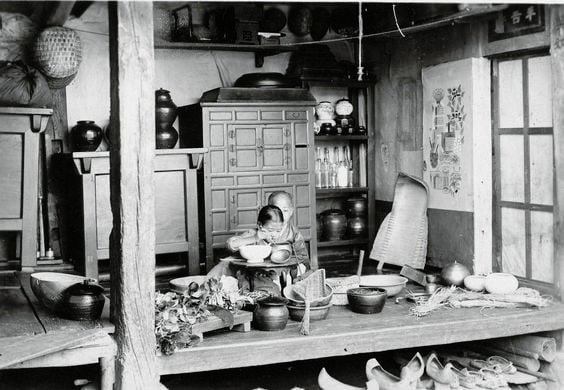

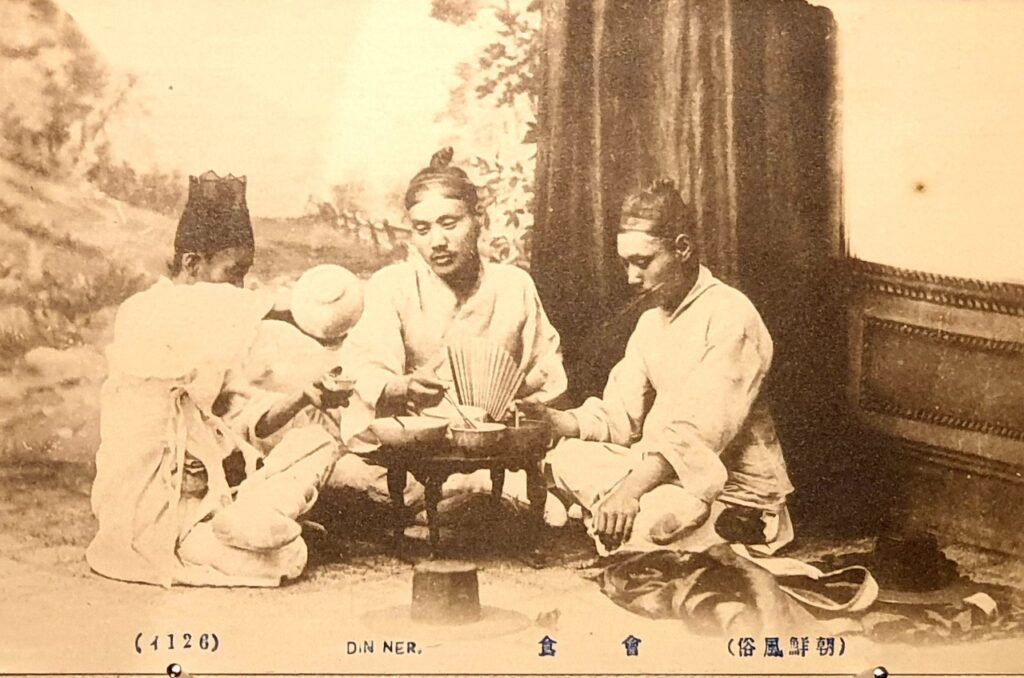
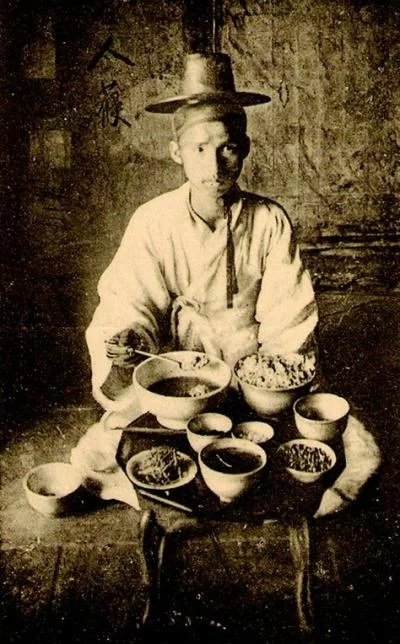
Whether it is the shape of the top, the legs, or the wood used, all these elements vary depending on the region of origin. Soban had distinct regional characteristics depending on the region in which it was produced. In particular, Naju in Jeollanam-do, Tongyeong in Gyeongsangnam-do, and Haeju in Hwanghae-do. The design also depended on their intended use.
TYPES OF SOBAN ACCORDING TO THEIR DESIGN & AREAS OF ORIGIN.
Soban are generally classified in various ways. Commonly, they are referred to by their region of origin. Another standard system classifies them by the shape and number of the legs. The shape of the table’s top (rectangular, circular, octagonal, etc.) is also used as a differentiation factor.
- Iljuban. It is also called a single-legged soban because there is only one column supporting the top. It was designed for use with simple refreshments or fruit rather than meals.
- Punghyeol Gonggo (Funghyeol Gonggo). This soban was made to carry food outdoors or to government offices. There are openings on the sides so that you can see the front when carrying food, and there are handles on both sides.
- Najuban (羅州盤) Soban made in Naju, Jeolla-do Province. It is among the largest sobans. The rim of the top plate is made separately and attached to the plate to prevent bending. It has a rectangular form. Additional bars between the legs were used to reinforce the fragile structure and prevent bending.
- Gujokban. Of a circular shape, it is also called “Gaedari Soban” because the legs resemble dog legs. It was mainly produced in the “Chungju” area in North Chungcheong Province.
- Majokban. The overall shape of the legs is quite similar to the “Gujokban.” It is called “Majokban” because its legs bend and roll outward, similar to a tiger’s leg.
- Haejuban. It has a rectangular shape. Two boards are erected at both ends instead of the four legs. This engraving (板脚) form is a typical design of “Haejuban.” It was decorated with engravings of thunder and lotus patterns. Haejuban is a type of soban mainly made in Haeju, Hwanghae Province.
- Gangwon Do ban. From Gangwon Province, this small soban has a simple design. It is made by rough-cutting thick plates and was mainly used to serve tea or snacks during the Joseon Dynasty. Another design includes an octagonal top panel with a high rim connected to the legs.

1 – ILJUBAN.

H. 24cm, Diameter: 36cm. Collection: National Museum of Korea
Since there is only one pillar supporting the ceiling plate, it is called a one-legged table or one-legged table. It was small in size and had only one leg, so it was used as a tea table to place simple refreshments. In particular, this small table has a lotus leaf-shaped surface on the top, and leaf veins, turtles, fish, etc. are expressed with mother-of-pearl on top.


2 – PUNGHYEOL GONGGO.

Collection: National Folk Museum, Seoul.

Collection: National Folk Museum. Seoul.



3 -NAJU BAN.
Originating in the Naju area in the southern part of Jeolla Province, It is a simple and sturdy piece of furniture, preserving the natural grain of the wood without any miscellaneous decorations or fancy carvings. The structure between the legs is carefully constructed to ensure strength. The top plate, upon which the bowl is placed, and the rim are made and attached separately, resulting in a thick rim. This design prevents the top plate from bending, allowing for the creation of relatively large tables. The legs are primarily cylindrical, although there are cases where they are carved into shapes resembling animal legs, such as tiger legs or other animal forms.

This is a small table made in the Naju region of Jeolla-do. It was made with a sturdy structure compared to small tables in other regions, so it could be made larger. Almost no decoration is omitted, creating a simple and concise style.
4 – GUJOKBAN.

5 –MAJOKBAN.



6 – HAEJUBAN (海州盤).
Unlike typical small tables with four legs, the Haeju table features legs composed of two wide carvings adorned with beautiful openwork decorations. While its external appearance is gorgeous and serves as a decorative element, it has the drawback of being less structurally durable compared to small tables from other regions. The top and rim are crafted from a single piece of wood by hollowing out a thick plate, with the four corners of the rectangle treated with rounded curves. Both the legs and small panels under the top plate are embellished with openwork decorations created by drilling holes in various patterns, including thunder, lotus, bat, arabesque, and swastika motifs.

Collection: National Museum of Korea
This is a small table made in the Haeju area of Hwanghae Province. Unlike the small tables in other regions, the Haeju table has two legs and is decorated with colorful patterns on the leg plates, so it is considered the most decorative table.

Collection: National Museum of Korea.

Collection: National Museum of Korea.

Collection: National Museum of Korea.

Collection: National Museum of Korea.

Collection: National Museum of Korea.

Collection: National Museum of Korea.
7 – GANGWON DO BAN.



TONGYEONG BAN.
Soban made and produced in Tongyeong, Gyeongsangnam-do province. Standard dimensions: H. 25 – 28cm, W. 38 – 47cm, D. 28 – 38cm. Originally, the Tongyeong region is a place with a long history of mother-of-pearl lacquerware, and the amazing skill of mother-of-pearl work extends to small tables, boasting of its excellent craftsmanship. The basic form of the Tongyeong ban is a simple rectangular side and a straight cylindrical four legs without any decoration. While it is rectangular, the shape at the four corners do not form angles but are rolled into two soft curves. The materials used for the top panel include zelkova and ginkgo trees, which have beautiful grain patterns. Linden and pine are also used.


Collection: National Museum of Korea.

Collection: National Museum of Korea.
This is a small table made in the Tongyeong area of Gyeongsang-do. In records from the Joseon Dynasty, Tongyeong is introduced as a region that produces small tables with good patterns. Tongyeongban is sturdy, but is more convenient and practical to make than Najuban, so its shape is still recognized as a typical dining table to this day.
CLASSIFICATION BY THEIR SHAPE
HOJOKBAN.
The most popular of these is “hojokban” (tiger leg), which can be of a circular or rectangular form.
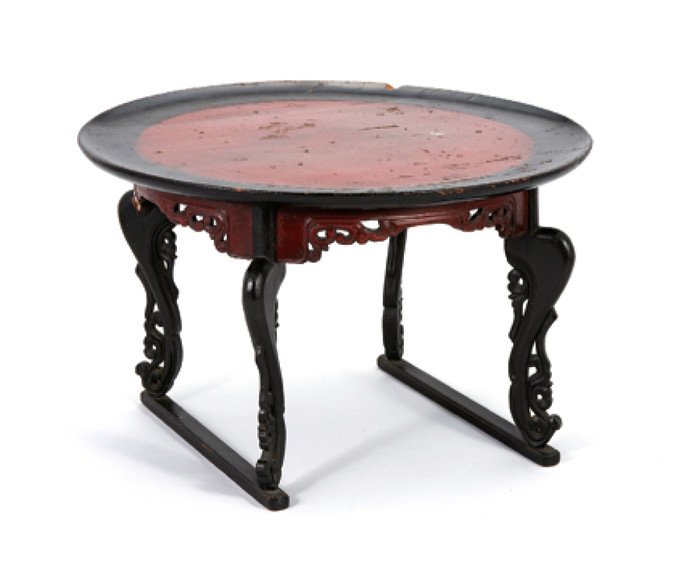
Lacquer on wood.
W. 47,5cm, H.400cm.
Collection National Museum of Korea.

Diameter 44.0cm, height 29.0cm,
Collection: National Museum of Korea
It is a table with S-shaped legs, so named because it resembles the shape of a tiger’s legs. It was the most commonly used soban during the Joseon Dynasty and was produced nationwide.


Collection: National Museum of Korea.

Collection: National Museum of Korea.

Collection: National Museum of Korea.

Collection: National Museum of Korea.

Collection: National Museum of Korea.

Collection: National Museum of Korea.

Collection: National Museum of Korea.


Collection: National Museum of Korea.

Collection: National Museum of Korea.

Collection: National Museum of Korea.

Collection: National Folk Museum, Seoul.

Collection: National Folk Museum, Seoul.
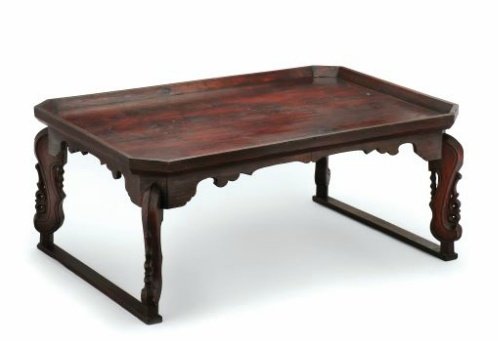
It is called ” Hojokban ” because the leg shape of soban looks like a tiger’s leg. As a square half, on the other hand, the 盤面 is finished by cutting the four ears and folding the ears. The outer line of the calf part of the leg is angled, and the arabesque and bamboo cut-out patterns are engraved to add splendor.
GUJOKBAN
Gujokban (狗足盤). This table is named “Gujokban” because the leg shape of the soban resembles that of a dog’s leg. It was primarily produced in the Chungju area in North Chungcheong province. The overall design is characterized by simplicity, with minimal support under the soban and a footrest under the leg, without any prominent embellishments.
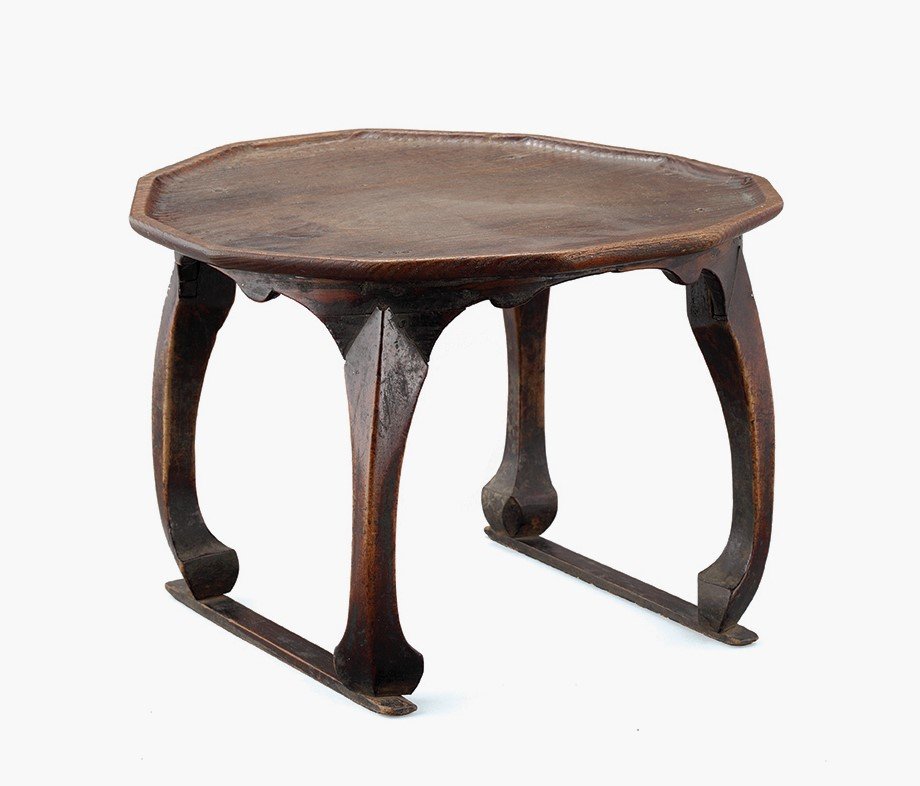

The shape of the leg is like a dog’s leg, shriveled inward, so it is called Gujokban or Gaedari Soban. It is also called Chungjuban as it is produced in the Chungju region of Chungcheong Province. It is said that it was not only elegant in shape, but also sturdy and made of a lot of materials, so it was mainly used by the upper class.
HAEJUBAN (海州盤).
This is a soban made in Haeju, Hwanghae Province. These sobans feature luxurious designs with intricate openwork, and they are supported by two wooden boards on both sides, serving as legs for the table. They are often rectangular in shape.


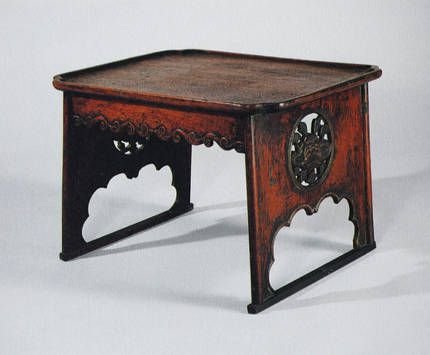

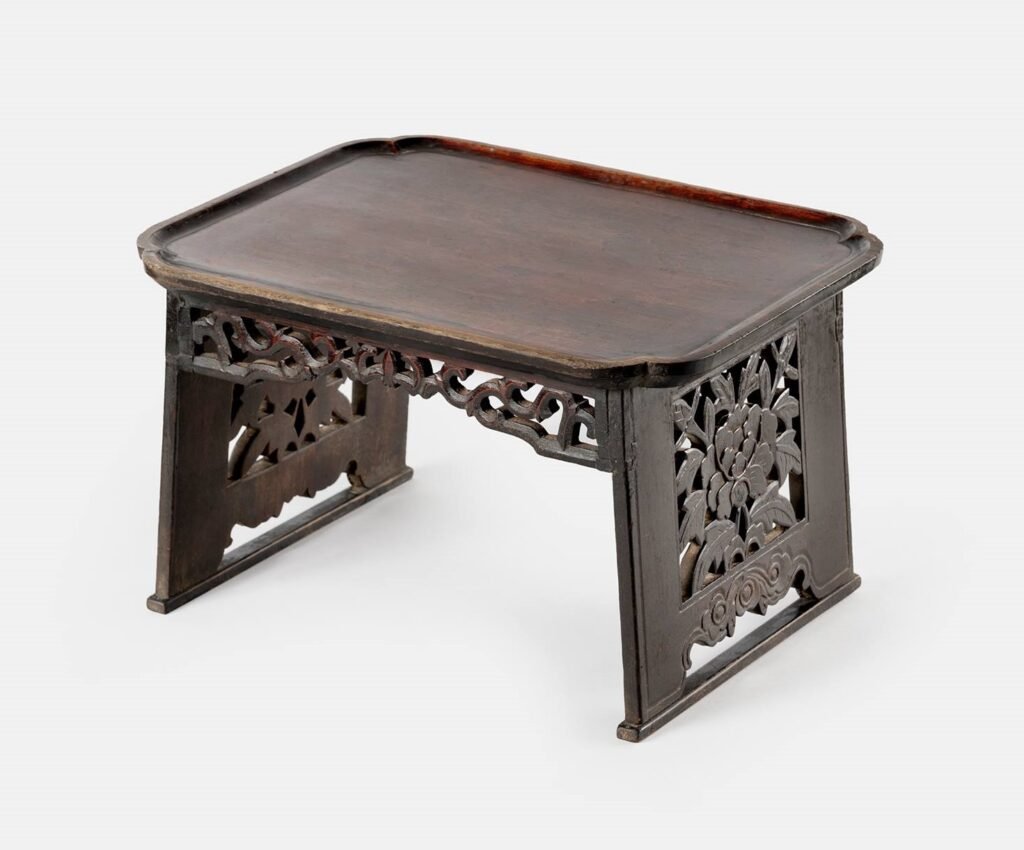


WONBAN (round table).

Wood, lacquer, mother-of-pearl inlay
PEM, Peabody Essex Museum.
BANWOLBAN – HALF MOON SOBAN.

It was given the name Banwolban because the shape of the plate resembles a half moon. Rather than being used for eating, it appears to have been used as an auxiliary function by placing it next to another table or by attaching it to one wall.

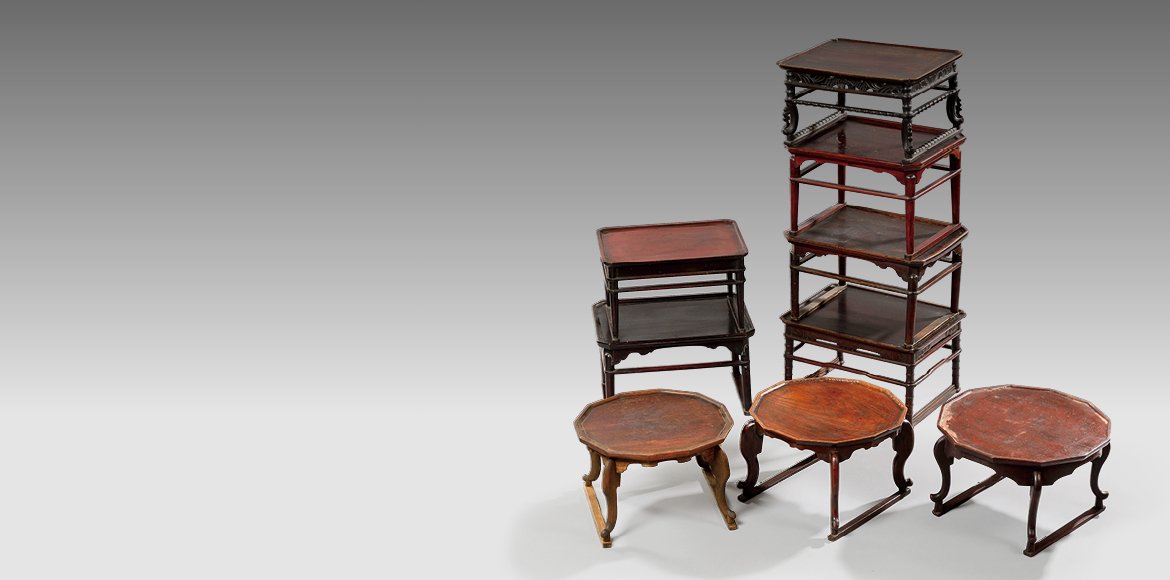
This certainly takes me back. I have a couple in Seattle from the old days. I spent 30 years there. Wonderful posting!
Thank you Peter.